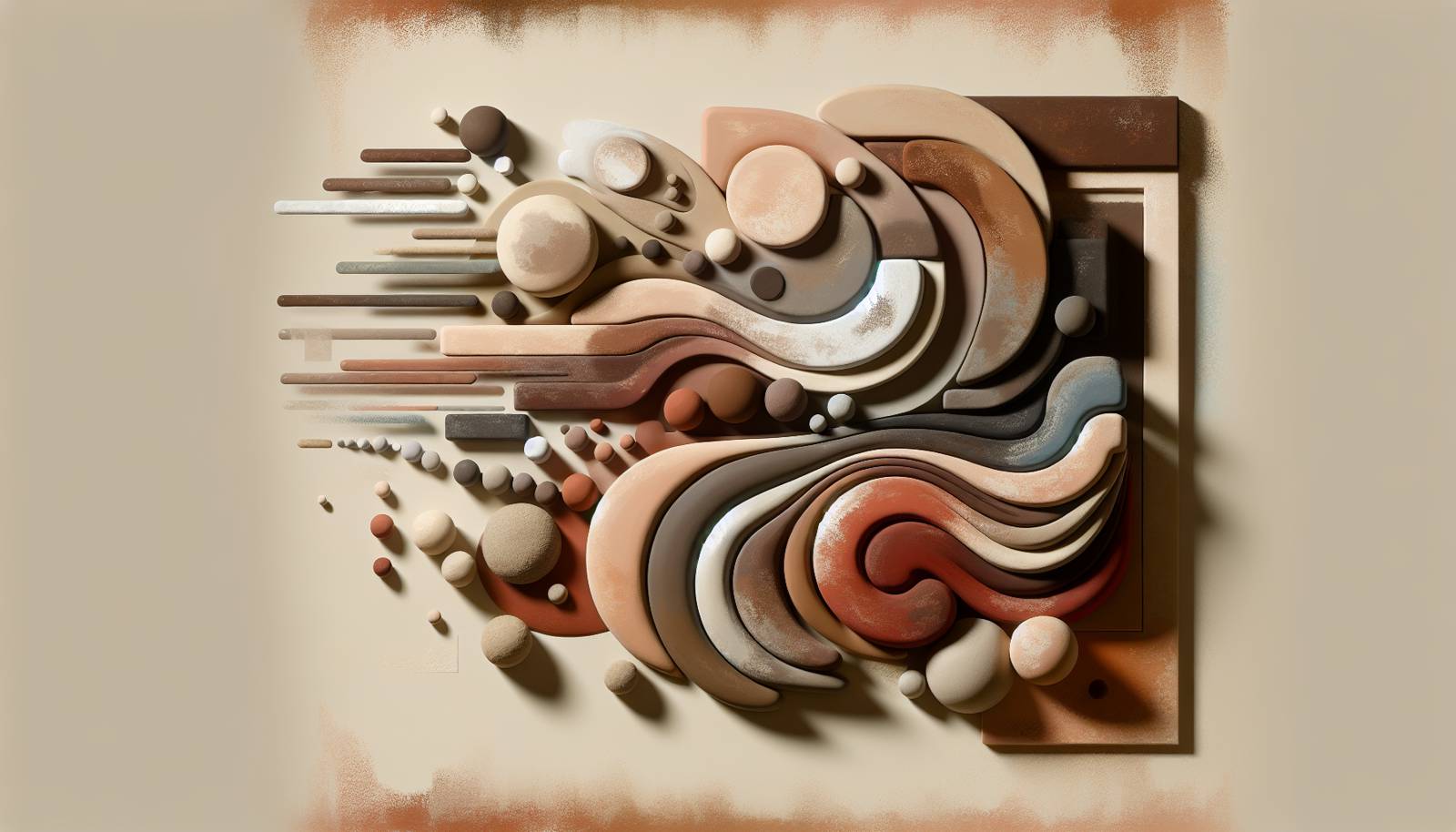
FAQ About The Evolution of Claymation in Stop-Motion Animation

What is claymation in stop-motion animation?
Claymation is a type of stop-motion animation where each animated piece, or scene, is made from malleable substances like clay or Plasticine. Animators sculpt figures and environments that can be manipulated frame by frame to create the illusion of movement when played back in rapid succession. This technique is distinct because of its reliance on the tactile medium of clay, allowing for unique textures and expressions.

How did claymation evolve in stop-motion animation history?
Claymation has evolved significantly since its inception in the early 20th century. Initially, it involved straightforward, simple movements due to technical and material limitations. Over the decades, advancements in camera technology, lighting, and the development of new materials allowed for more complex scenes and fluid motions. Animators like Will Vinton popularized the technique in the 1970s and 1980s, leading to a resurgence in the use of claymation in commercials, television, and films.

What are some well-known films using claymation techniques?
Some renowned films that feature claymation techniques include "Chicken Run" and "Wallace & Gromit: The Curse of the Were-Rabbit," both from Aardman Animations. These films are celebrated for their creativity, humor, and technical achievements in clay animation. Other notable productions include "Coraline," which, while featuring puppets rather than clay figures, uses similar stop-motion techniques that were pioneered by claymation.

Who is considered a pioneer of claymation?
One of the pioneers of claymation is Willis O'Brien, best known for his work on "The Lost World" (1925) and "King Kong" (1933). However, Art Clokey was instrumental in popularizing clay animation in the 1950s with his creation of "Gumby." Later, Will Vinton coined the term "Claymation" and produced numerous projects that highlighted its unique possibilities.

How is claymation different from other stop-motion techniques?
Claymation is unique among stop-motion techniques because it uses flexible clay figures, allowing for smooth transitions and morphing of shapes, which is harder to achieve with other materials like wood or metal. Other types of stop-motion might include using puppets or models, which are typically less flexible and more rigid in their construction. This flexibility allows for a distinctive style with organic movements and transformations.

What materials are typically used in claymation?
The primary materials used in claymation are modeling clay and Plasticine, known for their pliability and ease of manipulation. These materials can be easily reshaped between each frame to create a seamless illusion of movement. Armatures (metal skeletons) are often inserted to provide structure and stability to the clay models, especially for characters requiring complex animations.

What role has claymation played in modern filmmaking?
Claymation has had a significant impact on modern filmmaking by expanding the creative possibilities of visual storytelling. It has paved the way for unique film aesthetics, influencing both live-action and animated films. Its tactile, handcrafted look continues to be sought after for its charm and distinctive style, particularly in an era dominated by digital animation. Studios like Aardman have pioneered integrating claymation with digital techniques, maintaining its relevance in the contemporary animation landscape.

How is technology affecting claymation today?
Technology has significantly influenced claymation by enhancing the quality and efficiency of production. Digital photography and software now allow for quicker frame capture and editing, reducing the labor-intensive nature of stop-motion. Additionally, CGI can be integrated with clay animation to create hybrid visuals that maintain the charm of claymation while benefiting from digital enhancements, such as in texture and background effects.

What are some challenges faced by claymation animators?
Claymation animators face several challenges, including time-consuming production processes as each scene requires meticulous frame-by-frame adjustments. Maintaining consistency in character appearance across thousands of frames can also be difficult, as clay models can deform or change slightly. Additionally, lighting and shadows must be carefully controlled to ensure seamless continuity, and repairs or adjustments to clay figures can add significant time to the animation process.

What techniques do animators use to ensure consistency in claymation?
Animators use various techniques to maintain consistency in claymation, such as creating detailed storyboards and shot lists to guide each movement precisely. They often use armatures to keep figures stable and track progress meticulously through reference photos. Ensuring uniform lighting and using rigs to hold characters in place can help mitigate changes that could occur between frames, maintaining the flow of motion and character features.

How does claymation contribute to storytelling in films?
Claymation contributes to storytelling by providing a unique, tactile aesthetic that can evoke various emotions, from whimsy to drama. Its tangible quality allows audiences to connect with the handcrafted nature of the animation, often resulting in a nostalgic or emotional response. The flexibility of clay enables the creation of imaginative worlds and characters, offering filmmakers a distinctive medium to convey their narratives creatively and engagingly.

Are there educational resources for learning claymation?
There are numerous educational resources available for those interested in learning claymation. Online platforms like YouTube offer tutorials ranging from basic techniques to advanced animation skills. Additionally, many animation schools and courses now include claymation modules, providing students with hands-on experience in creating stop-motion projects. Books and online articles also provide insights into the history and techniques of claymation.

What is the role of lighting in claymation?
Lighting is crucial in claymation, as it helps to create mood, depth, and focus within a scene. Proper lighting techniques can add realism or exaggeration to figures and settings, playing a vital role in how the audience perceives the animation. Consistent lighting is essential to maintaining continuity across frames and ensuring that shadows and highlights do not fluctuate noticeably, which could disrupt the viewing experience.

Why is claymation considered labor-intensive?
Claymation is considered labor-intensive due to the painstaking process of animating frame-by-frame. Each small movement or change in expression requires careful manipulation of the clay model, followed by photographing each frame accurately. Creating even a minute or two of footage can involve days of work, as it typically requires animators to produce 12 to 24 frames for each second of finished animation. This meticulous attention to detail makes claymation a time-consuming and laborious art form.

Can modern technology simplify the claymation process?
Modern technology can simplify some aspects of the claymation process, such as speeding up frame capture with digital cameras and using computer software to enhance post-production editing. Digital tools allow for quicker adjustments and composite work, especially in integrating backgrounds or special effects. However, the essential task of physically manipulating the clay models remains a manual craft, preserving the traditional artistry of claymation.

How do animators create special effects in claymation?
Animators create special effects in claymation by using advanced sculpting and painting techniques, alongside stop-motion tricks like replacement animation (where specific parts are swapped out to simulate movement). They can also use lighting effects and incorporate materials such as cotton clouds or paper for dynamic effects like smoke or water. With digital tools, animators increasingly blend CGI with clay animation to enhance visual richness while preserving the manual aspect of the characters.

What awards have recognized claymation achievements?
Claymation has been recognized by numerous prestigious awards, reflecting its artistic and technical achievements. Notably, Aardman Animations' productions like "Wallace & Gromit: The Curse of the Were-Rabbit" won several awards, including the Academy Award for Best Animated Feature in 2006. Claymation commercials and short films have also received accolades, underscoring their creativity and impact on the animation industry.

Is claymation still popular today?
Claymation remains popular today, appreciated for its unique style and artistic flair. While digital animation dominates the mainstream, claymation stands out for its handcrafted authenticity and whimsical aesthetic. Studios like Aardman continue to produce claymation films, and its influence is evident in various art forms and independent animations. Enthusiasts and professionals alike embrace claymation for its artistic challenges and creative potential.

How do animators ensure smooth motion in claymation?
To ensure smooth motion in claymation, animators meticulously plan and execute movements by altering the clay figures in minuscule increments, shooting each adjustment in sequence. They often use onion skinning techniques, where the animator views previous frames overlaid on the current scene, allowing for precision adjustments. Utilizing a consistent pace, careful attention to arcs, and timing also contribute to fluid and cohesive animation scenes.

What is the future of claymation in the animation industry?
The future of claymation in the animation industry looks promising, as it continues to evolve alongside technological advancements. While digital animation prevails, claymation finds its niche by blending traditional craftsmanship with digital enhancements, appealing to audiences that appreciate authenticity and creativity. As educational institutions and new platforms support stop-motion techniques, claymation remains a cherished technique for storytelling in independent and mainstream markets.
